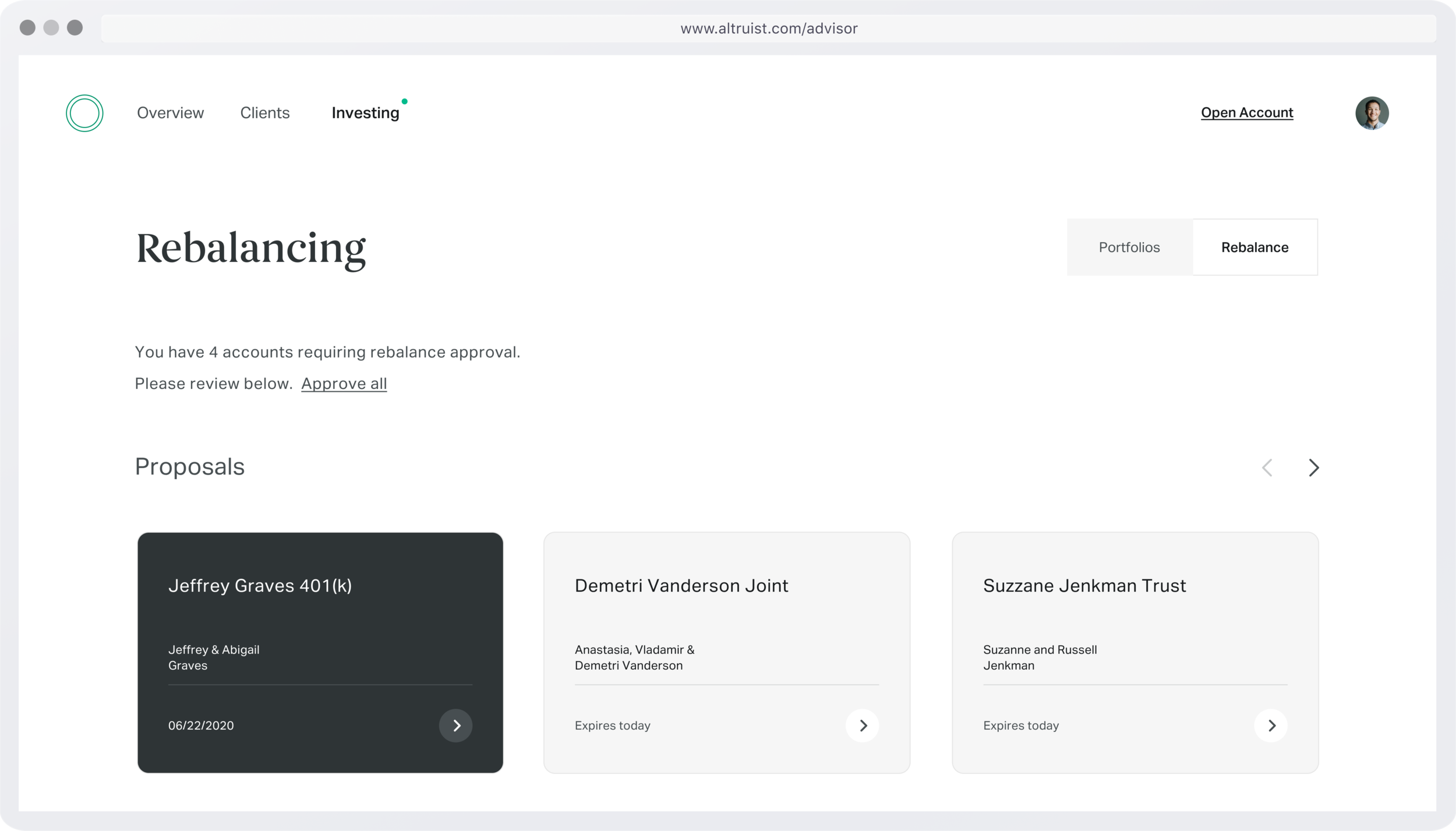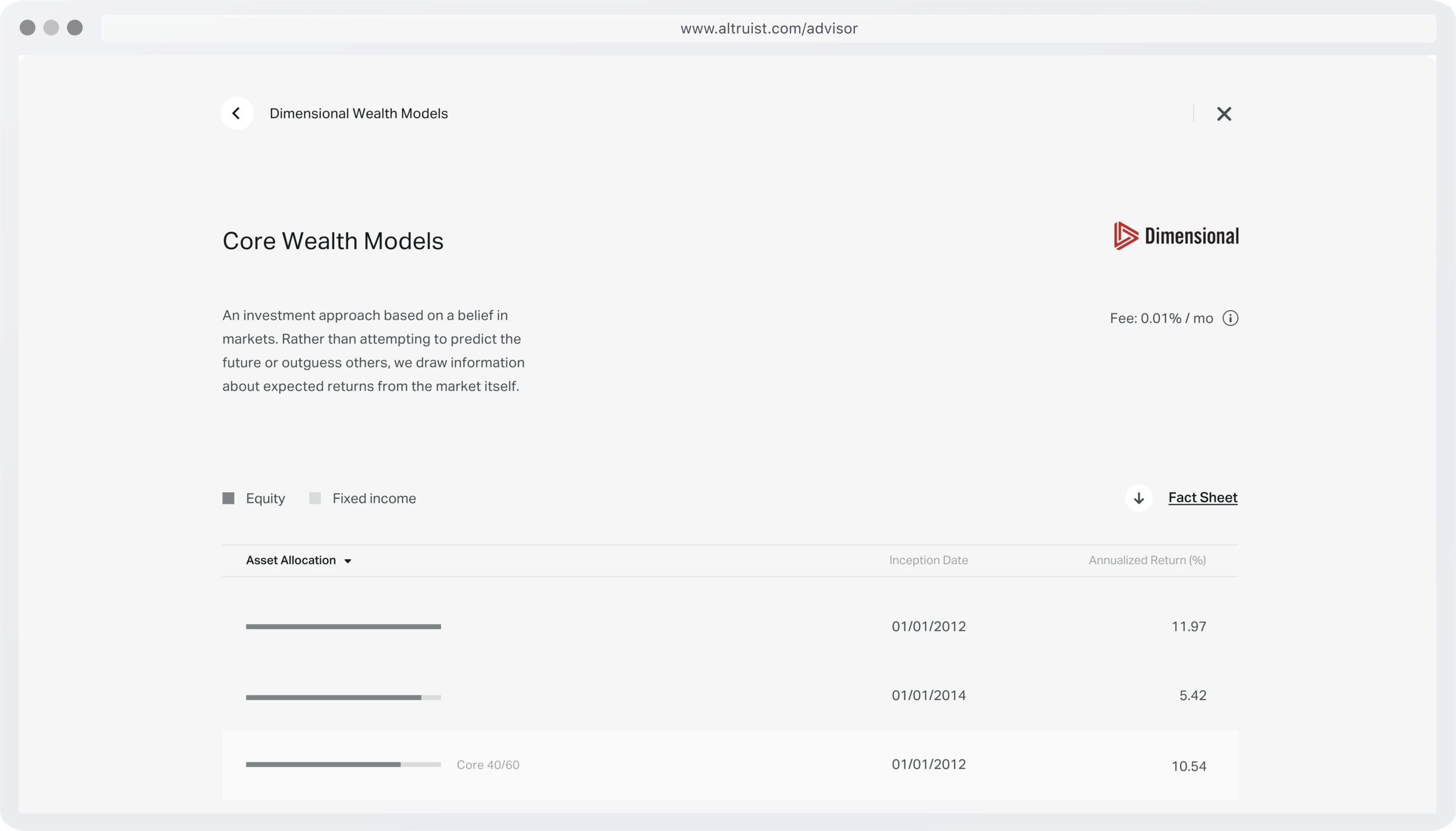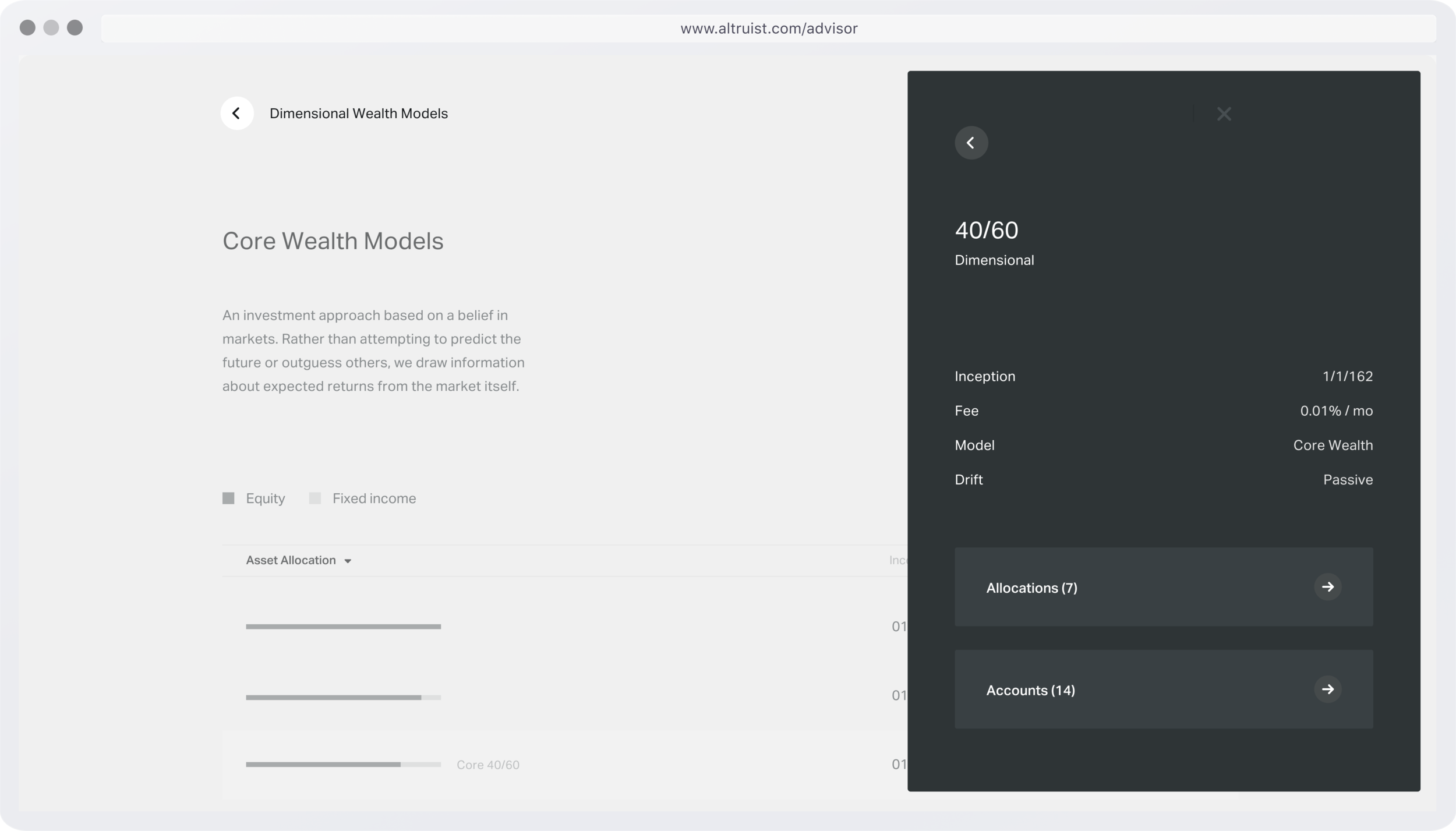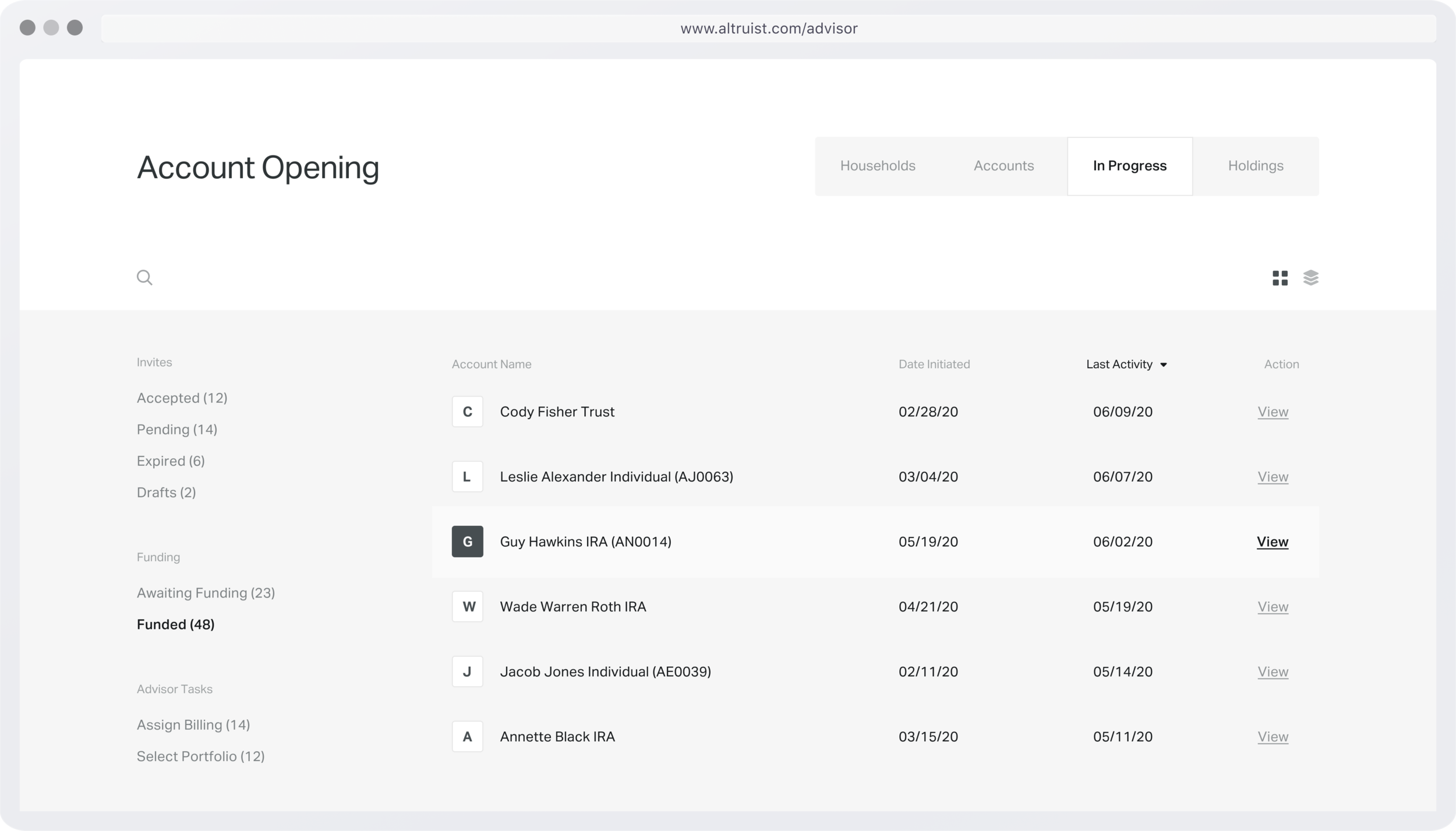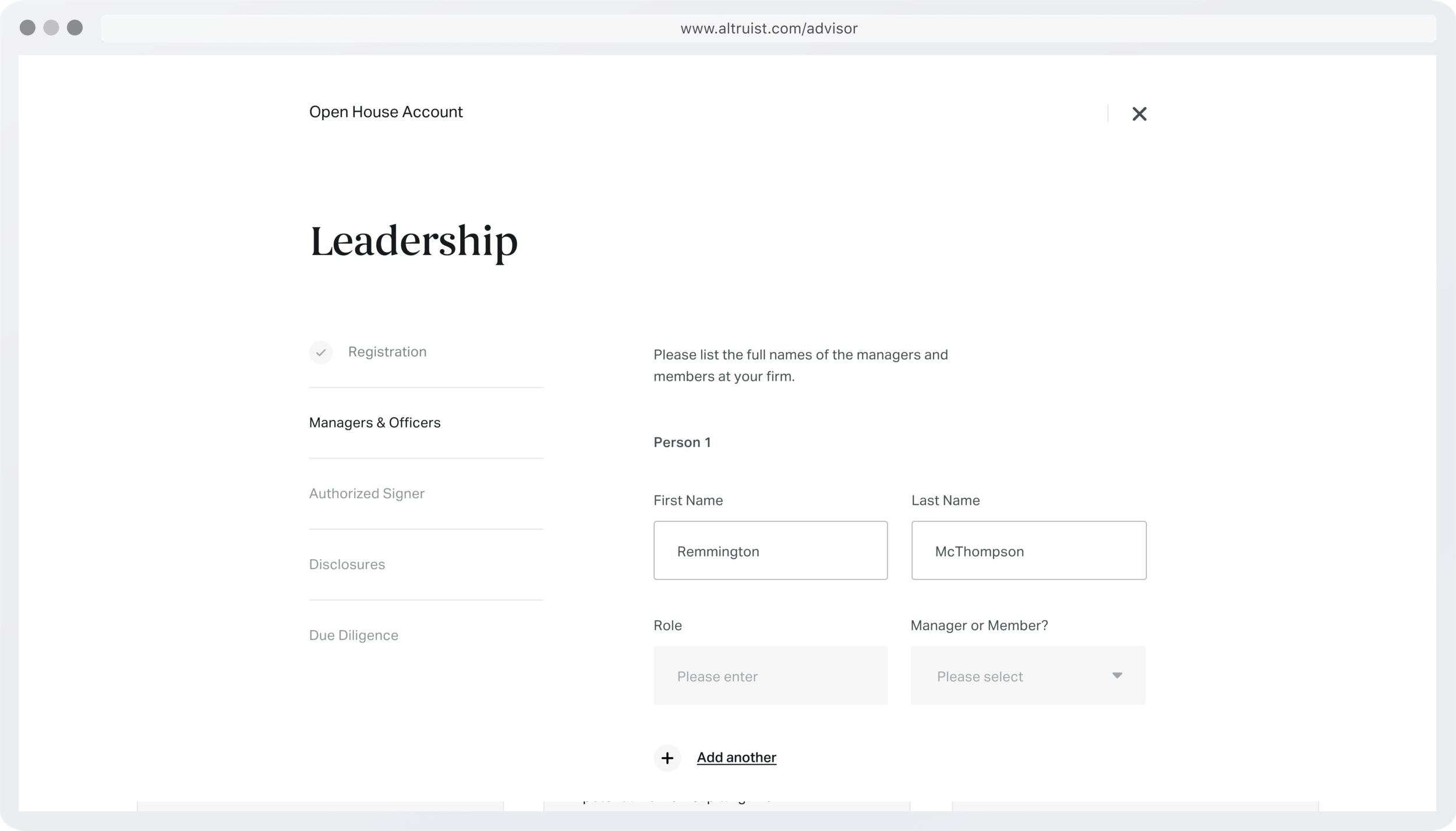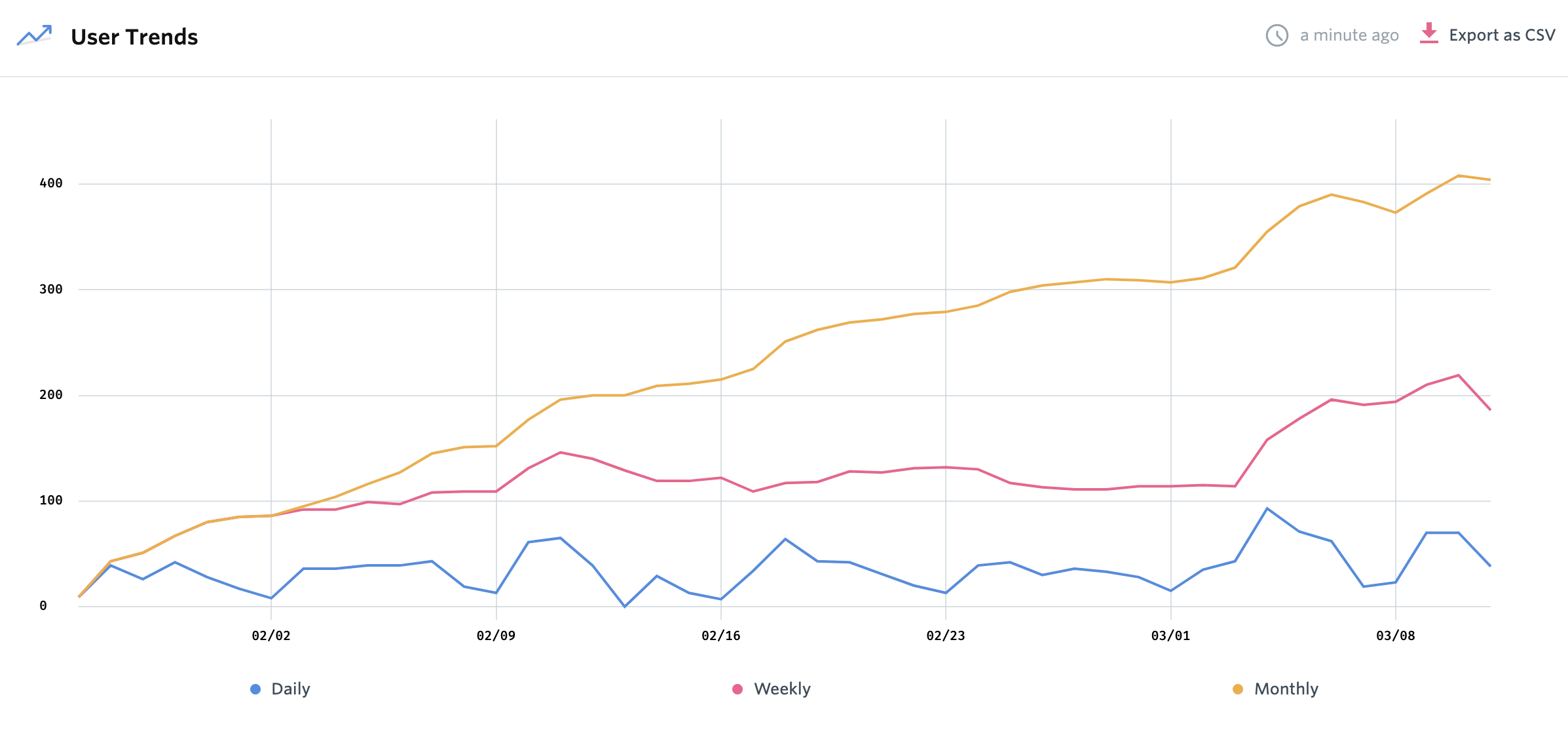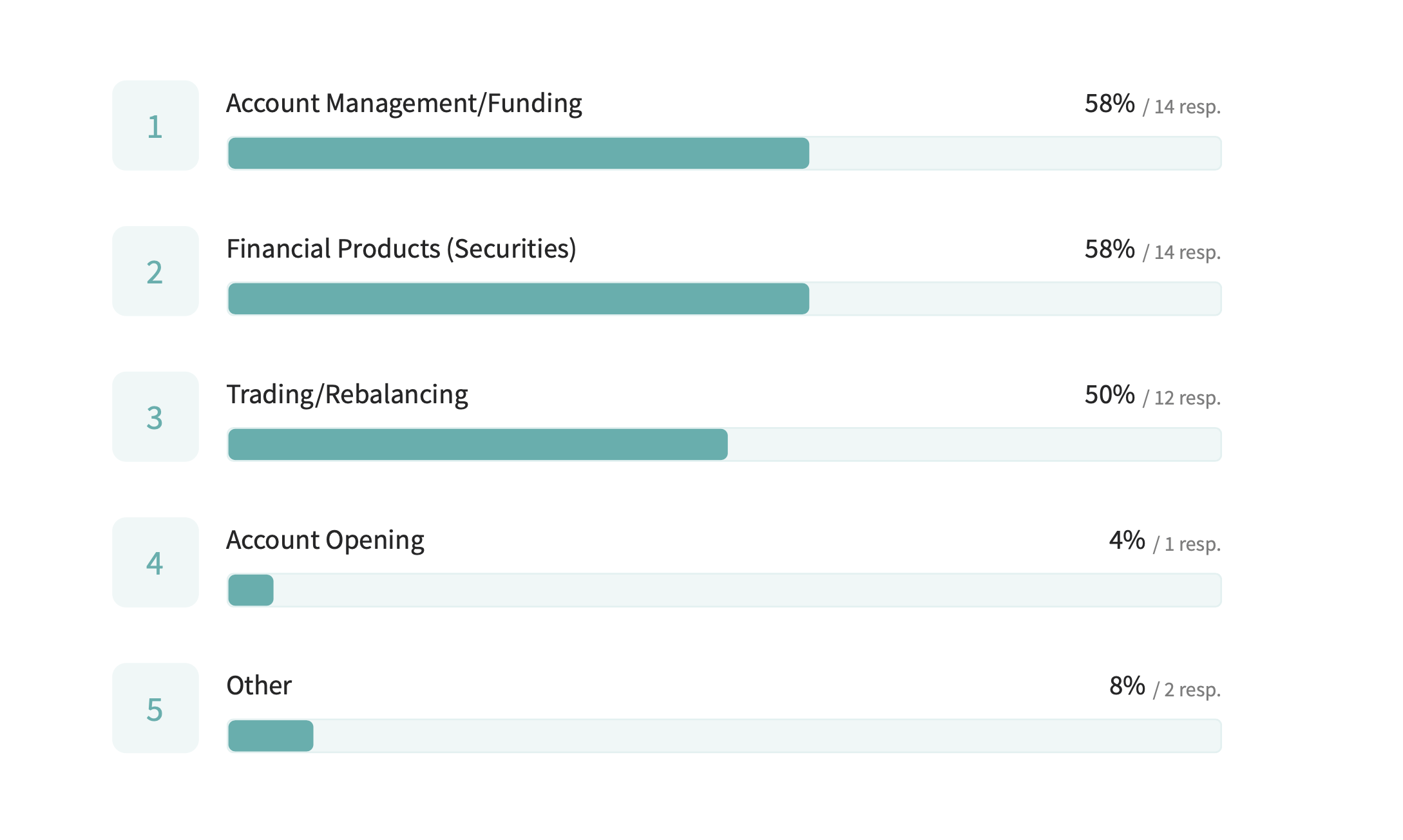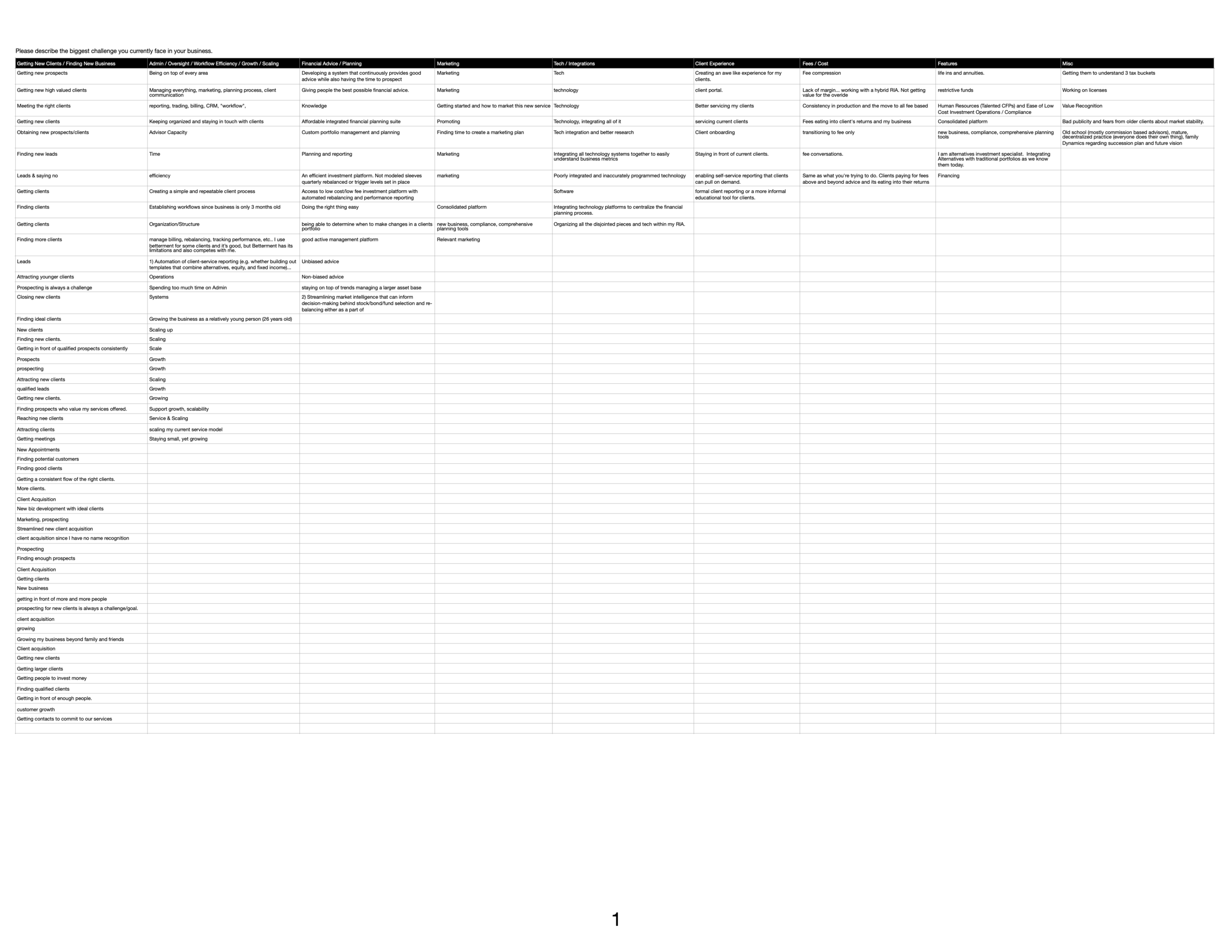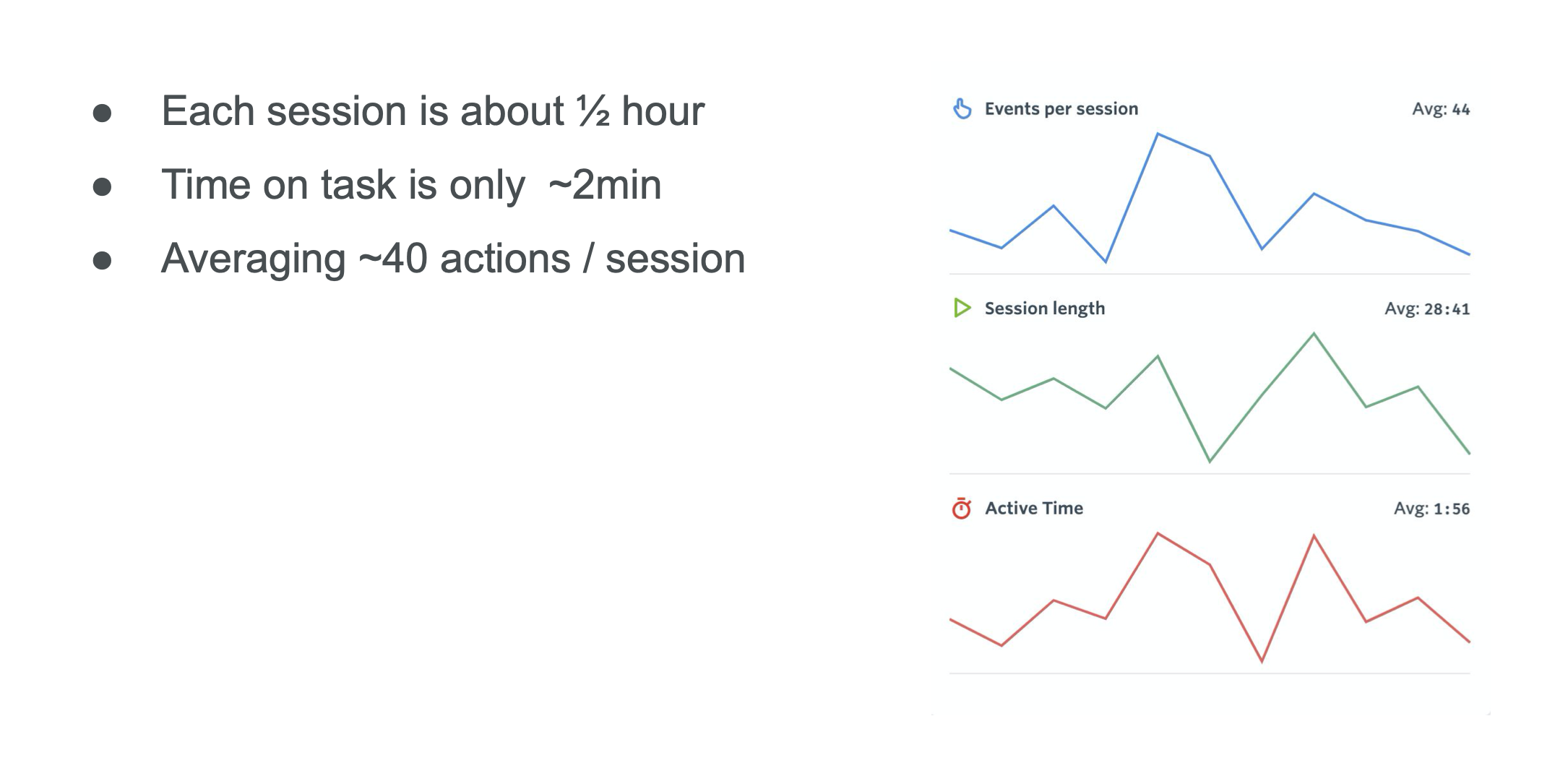We’ve built a fully-integrated portfolio accounting, securities trading & model-management platform in 18 months.
―
Financial technology is unforgiving and typically requires deep integrations with legacy technology that aggregates data of varying ages at different intervals, quite often unbeknownst to the end users. They simply notice if something doesn’t work or the numbers don’t match the data in another system.
Our challenge at Altruist has been to tame a traditionally bloated service offering into a delightful experience, heavily-based on tenets of minimal design.
“The layout is really clean and has all the important stuff right there. So far so good. Very intuitive to use.”
- Actual beta feedback
Users & Data
We’re incredibly fortunate to have such an engaged and open user base. One of the advantages to starting small is that it doesn’t take an entire user research department to get to know your users. We engage with them daily through feedback platforms like Canny and Intercom, and then leverage that feedback during weekly advisor interviews.
—
Teamwork
Although role title and role responsibilities can drift in and out of alignment, I’ve learned that the idea of a “principal” designer is completely relative to an organization’s internal DNA. It’s meant that stakeholders expect a high degree of independence, output and maturity in navigating both internal and external relationships.
From small design task execution to complex feature design processes, it’s been awesome being expected to fill in the gaps and share responsibilities traditionally reserved for Product, Strategy and QA teams.
Alignment
Collaborative design tools like Figma have enabled us to unlock so many ideas in a short amount of time. It’s also created some headaches during handoff processes due the fluid nature of product design. By adhering strictly to good project organization practices, however, we have learned to maintain alignment with our engineering friends.
That’s been a huge lesson for me: proper alignment between product, design and engineering drastically increases the caliber of what gets shipped by allowing QA resources to be spent on the important things, like data accuracy.
Interaction
I realized I actually love working as a product designer. I love leveraging and contributing to design systems. I love sharing work in progress on our user forums, inspiring real dialogue on how we can make it better.
It honestly seems that product, experience and interface design skills build on each other exponentially. More effective research leads to more accurate problem framing, which then allows the solution to come into focus that much quicker when designing screens.
Designers often either embrace or avoid interacting with users. Thankfully, it’s something that can often come more easily to those with a few extrovert qualities. The rawness of emotion that you can sense from both ends of the spectrum - from frustration to delight - makes it such a fulfilling event to connect with someone while knowing you can translate that feeling into something tangible.
Our legacy account opening flow - created to visualize which certain events needed to happen at different stages. It helped us iterate towards our current version.
Design Education
Building Better Experiences
Thoughts on intelligent feature configuration.
Intro to Product Discovery methods
Little workshop on solving the right problem.





